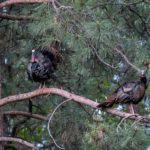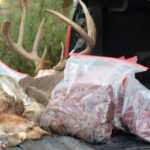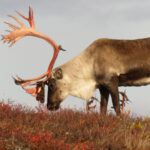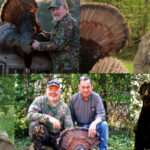Frosty grass and numb hands suggest bull elk should be rutting and bugling, yet the Colorado mountains I bowhunted 15 days in September remained silent, save for the flying corvids assigned to tail me.
Ravens, crows, gray jays and Steller’s jays are known for their intelligence. They don’t care if bull elk won’t bugle. They just know to keep track of humans whenever and wherever we roam the backwoods each autumn.
Corvids realize that human hunters are their path to wealth and easy living, if only temporarily. When hunters kill and field dress an elk, corvids don’t complain that we carry off the meat, hide, heart and even the liver and tongue, leaving behind only bones and entrails for avian and four-legged scavengers. After all, elk-size carcasses still provide lots of eating.
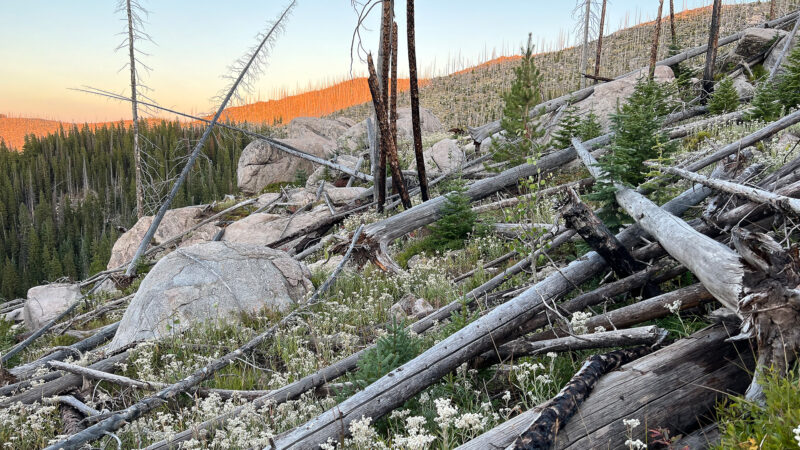
Likewise, hunters like me and my friend Dave Burgess, 39, of Aurora, Colorado, appreciate that corvids check in often. Gray jays, especially, show up at close quarters whenever we stop to glass a meadow, make elk calls, or simply stretch out to nap.
Gray jays often patrol in pairs, swooping down from a branch and arcing into a graceful climb to their next observation post. They probably wonder why humans fail so often to kill their food. If they ever learn to reveal where elk are hiding, our success rates would skyrocket.
Instead, Burgess and I poked around and peered through the public’s national forests, looking for elk while imitating their sounds to call them into bow range. Those tactics nearly paid off for Burgess during my second day in camp, Sept. 8. After hiking about a mile west after breakfast, he tiptoed up to a grassy bench in the mountainside that seemed especially “elky.” That is, bedded elk had flattened table-size depressions into the knee-high grass, and left behind enough scent to musk things up.
As he inched ahead, Burgess thought he heard an alarm snort, but wasn’t sure if it came from an elk or a mule deer. Then he spotted a 5-by-5 bull elk 60 yards away through trees and brush. A 15- to 20-minute standoff ensued before the bull moved off.
That afternoon Burgess walked a half-mile west and bumped into another bull, possibly the same one from the morning hunt. He said both bulls had similar 5-by-5 racks and were hanging out at about 9,700 feet above sea level. This bull soon disappeared, however, and so Burgess slipped downhill to another grassy, musky-smelling bench.
Before moving 100 yards he heard an animal, probably a mule deer, stotting off in front of him. Although elk sometimes stot – a fleeing action that looks like they’re bouncing on pogo sticks – mule deer commonly stot.
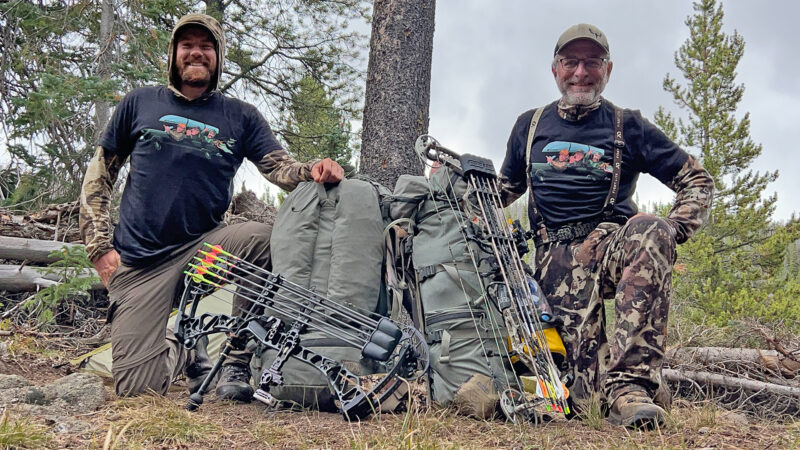
Burgess, however, soon spotted an elk, but only from the shoulders to rump. When it moved, he saw it was a bigger bull than the others.
And it was walking his way.
“I set up for a shot to my right because that’s the way it moved,” Burgess said. “But then it turned 90 degrees and walked to my left. When I adjusted my feet so I could shoot that way, the bull saw me move or heard my boots crunching. He spooked and ran off.”
Burgess and I didn’t see elk the next two days. After a rain and small-hail storm a couple of days later, I hiked up a mountainside a mile southwest of camp to a meadow inside a three-walled bowl atop the ridge. The meadow’s spongy, grassy interior held a few elk beds, one wallow and countless mucky slots where elk had walked.
I moved 50 yards into the woods to escape the afternoon sun and eat. Before I could dig out my lunch, I heard hoofsteps in the nearby meadow and saw two cow elk and a 6-point bull heading my way. Within seconds they crossed my boot prints and likely smelled scent I left behind on the brush. And then another five cows and calves stacked up at the meadow’s edge.
The lead cows soon smelled enough human scent to spook, and the entire herd retreated, back across the meadow to safety. Why eight elk were walking around leisurely on a sunny afternoon at 1:53 p.m., I’ll never know, but elk are less predictable than white-tailed deer.
When we weren’t watching elk, Burgess and I kept bumping into other hunters. We thought we’d be alone, given that we were camped inside a wilderness area 5 miles from the nearest road. Other hunters had made the same decision, however. Our exchanges stayed cordial as we tried gauging how best to avoid each other while hunting.
Two of those folks, a couple named Kurt and Denise from Steamboat Springs, walked past me late on my third day in camp while I watched an “elky” area leading to a meadow near our campsite. When they sat to rest and sip water about 75 yards away, I walked over to say hello. The couple didn’t seem surprised, and smiled as I approached. “We meet the nicest people in wilderness areas,” Denise said. We mostly talked about elk before they moved on, everyone agreeing the bulls weren’t yet “talking,” and seemed stuck in their summer patterns.
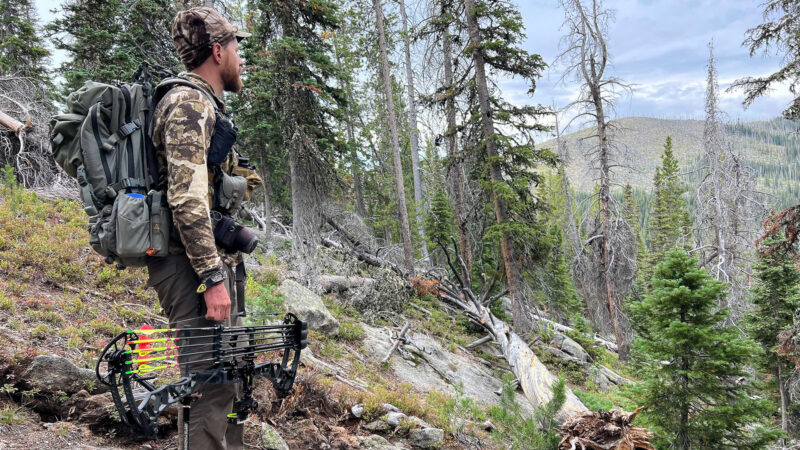
Before leaving camp for another hunt Sept. 12, Burgess and I sipped coffee while watching the long drainage below. We wondered how many hunters over past decades had followed the rough east-west trail heading down the meadow’s length. Where were they from and how were their hunts?
All we knew was that we had met fellow hunters from Iowa, Minnesota, Wisconsin and Colorado. Most kept clean camps, but one camp held “surface-crappers,” or words to that effect.
The most intriguing camp, however, had long gone unoccupied. Burgess found the campsite while hunting three miles west of ours. He said big logs were stacked and rotting there, and an old latrine sat gray and dilapidated. Nearby, a pad dug into a hillside looked big enough to hold a large wall tent.
Burgess thinks he knows who once hunted there. Nearby, down a path overgrowing with brush, stood a wooden monument of sorts with a U.S. military plaque reading: “Charles E. Holschuh, A1C Air Force, Korea, 10-20-1932 to 10-31-2011.”
We wished we could have known Mr. Holschuh. As Denise said, you meet the nicest people in wilderness areas.

 By
By 